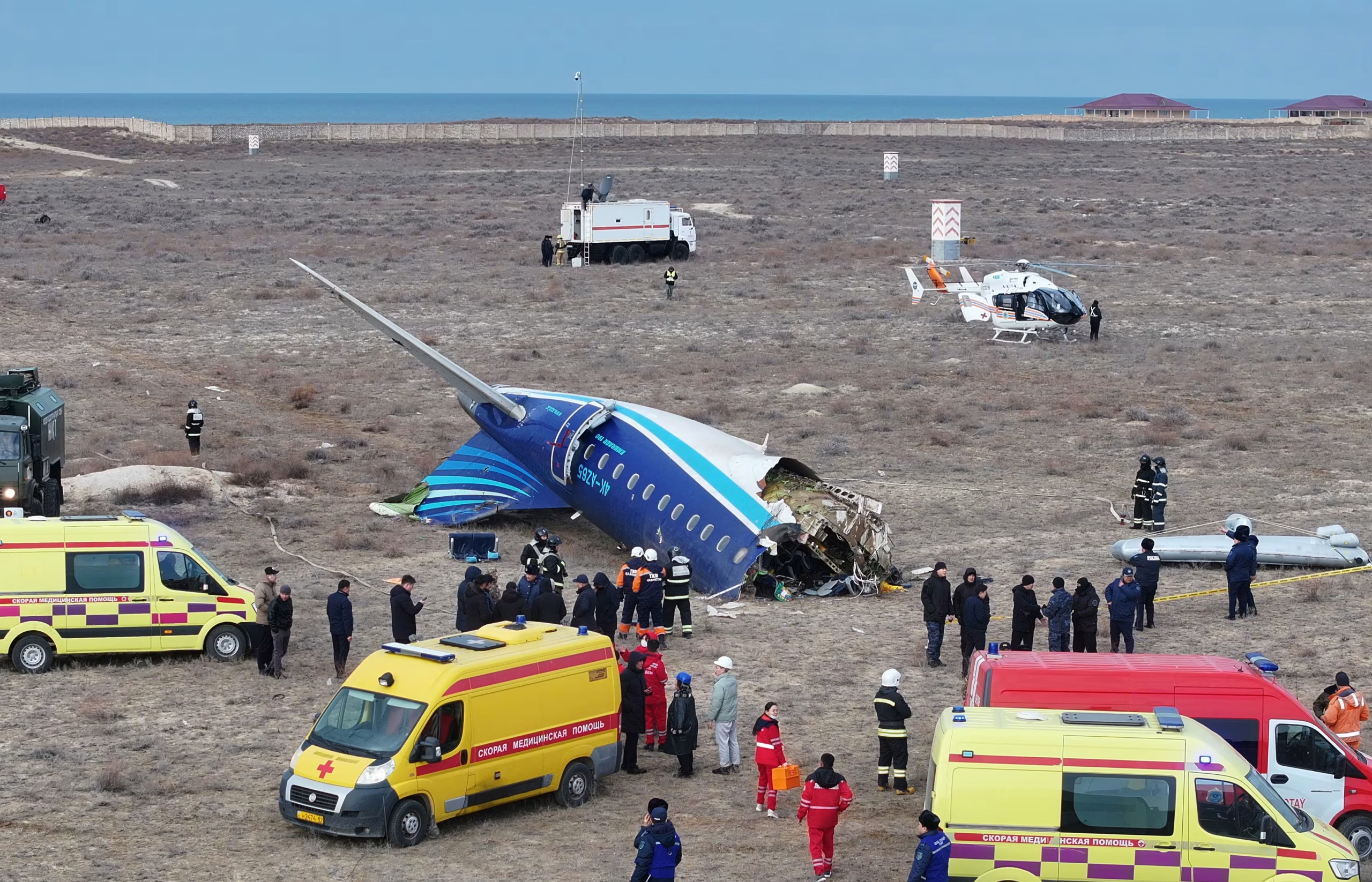Summary
Conflict zones reducing available flight paths
Diversions, cancellations are a growing cost burden for airlines
Civil aviation spending more on security planning, data
NEW DELHI, India, June 4 (AfrikTimes) – The growing number of global conflict zones is placing a heavy burden on airline operations and profitability, according to industry executives. Carriers are increasingly navigating threats from missiles and drones, airspace closures, GPS spoofing, and the downing of commercial aircraft.
Airlines are incurring soaring costs and losing market share due to cancelled flights and costly last-minute re-routings. The aviation industry, renowned for its commitment to safety, is now investing more in data intelligence and security planning.
“Flight planning in this kind of environment is extremely difficult,” said Guy Murray, head of aviation security at European carrier TUI Airline. “The airline industry thrives on predictability, and the absence of that always drives up costs.”
With growing airspace restrictions around Russia and Ukraine, across the Middle East, between India and Pakistan, and in parts of Africa, airlines are being left with increasingly limited route options.
“Compared to five years ago, more than half of the countries overflown on a typical Europe-Asia flight must now be carefully evaluated before every journey,” said Mark Zee, founder of OPSGROUP, a membership-based organization that shares flight risk intelligence.
 Graphic: Airlines that are banned from Russian airspace or choose not to overfly it out of safety concerns take longer to travel between several destinations than carriers that fly over Russia
Graphic: Airlines that are banned from Russian airspace or choose not to overfly it out of safety concerns take longer to travel between several destinations than carriers that fly over Russia
Russian airports, including those in Moscow, are now frequently shut down for brief periods due to drone activity. Meanwhile, interference with navigation systems, commonly known as GPS spoofing or jamming, is intensifying near geopolitical flashpoints worldwide.
Last month, when tensions escalated between India and Pakistan, both nations closed their airspace to each other’s aircraft, further complicating international flight operations.
“Airspace should not be used as a retaliatory tool, but it is,” Nick Careen, International Air Transport Association (IATA) senior vice president for operations, safety and security, told reporters at the airline body’s annual meeting in New Delhi on Tuesday.
Isidre Porqueras, chief operating officer at Indian carrier IndiGo (INGL.NS), noted that the recent diversions are undermining efforts to reduce emissions and improve operational efficiency.
 The IATA logo is displayed during the annual International Air Transport Association (IATA) meeting in New Delhi, India, June 2, 2025.
The IATA logo is displayed during the annual International Air Transport Association (IATA) meeting in New Delhi, India, June 2, 2025.
WORST-CASE SCENARIO
Finances aside, civil aviation’s worst-case scenario is a plane being hit, accidentally or intentionally, by weaponry.
In December, an Azerbaijan Airlines flight crashed in Kazakhstan, killing 38 people. According to Azerbaijan’s president and Reuters sources, the aircraft was mistakenly shot down by Russian air defenses. Just two months earlier, in October, a cargo plane was shot down in Sudan, resulting in the deaths of five people.
Since 2001, six commercial aircraft have been shot down, with three near-miss incidents, according to aviation risk consultancy Osprey Flight Solutions.
To ensure civil aviation remains secure amid a rising number of conflict zones, governments must improve how they share critical security information, IATA Director General Willie Walsh said this week.
Although commercial aviation safety statistics show a consistent decline in accidents over the past two decades, these figures typically exclude security-related incidents like aircraft being struck by missiles or other weapons.
In February, IATA identified conflict zone-related incidents as one of the most urgent threats to aviation safety, calling for immediate global coordination.
 Graphic: Pakistan’s move to close its airspace for Indian airlines on April 24 has forced flights to fly around Pakistan
Graphic: Pakistan’s move to close its airspace for Indian airlines on April 24 has forced flights to fly around Pakistan
TOUGH CHOICES
Airlines determine their flight paths using a patchwork of government advisories, internal risk assessments, and shared information between carriers and national authorities, leading to inconsistent strategies across the industry.
The closure of Russian airspace to most Western carriers since the outbreak of war in Ukraine in 2022 put them at a cost disadvantage compared to airlines from places like China, India and the Middle East that continue to take shorter northern routes that need less fuel and fewer crew.
Flight path decisions are constantly evolving. For example, Singapore Airlines’ (SIAL.SI) flight SQ326 from Singapore to Amsterdam has taken three different routes into Europe over the past year, according to Flightradar24 data. In April 2024, during reciprocal missile and drone strikes between Iran and Israel, the flight began traversing Afghan airspace, previously considered too dangerous, rather than passing through Iran.
In May, the route was adjusted again to avoid Pakistani airspace due to escalating tensions with India. SQ326 now enters Europe via the Persian Gulf and Iraq. Singapore Airlines declined to comment when contacted.
Pilots and cabin crew are increasingly concerned about how inconsistent and rapidly changing risk assessments affect their safety.
“IATA says airlines, not regulators, should decide if it’s safe to fly over conflict zones. But history shows commercial pressures can cloud those judgments,” said Paul Reuter, vice president of the European Cockpit Association, which represents airline pilots.
Crew members generally retain the right to decline a trip if they feel unsafe, whether due to adverse weather or conflict zones, noted IATA’s head of security, Nick Careen.
“Most airlines, in fact, I would say the vast majority of them, do not want crew on an aircraft if they don’t feel comfortable flying,” he said.
Additional reporting by Reuters’ Barrington in Seoul, and Abhijith Ganapavaram and Shivansh Tiwary, both in New Delhi.







